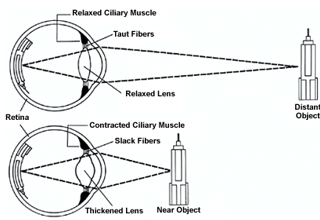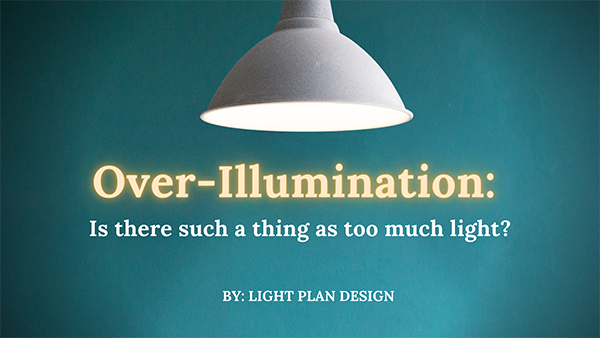Hint: The answer is a resounding yes!
Over-illumination is an intensity of illumination than is higher than required for the environment. The causes of over-illumination are many, and can include variables such as exceedingly high illumination targets from customers, erroneous photometric calculation input values, and changing finish colors and/or surface reflectance within a space without reviewing the impacts on photometric calculations, just to name a few.
The images below are intended to provide the audience with a visual representation of an appropriate lighting design versus an over-illuminated lighting design.

This blog was developed to give the audience an understanding of only a handful of the negative effects over-illumination can cause.
Migraine Headaches
Migraine headaches are common among occupants of an over-illuminated space. In one survey over-illumination was listed as the number two trigger for migraines, with 47% of the respondents reporting bright light as the principal trigger of their migraine episode1.
Fatigue, Stress, and Anxiety
Over-illumination can have a profound psychological effect on occupants. Fatigue is a common complaint from individuals exposed to over-illumination, especially with fluorescent media. Stress and anxiety are frequent outcomes from working in a setting of intense (especially fluorescent) lighting. Research has shown that annoyance from bright light leads to medical stress. It is clear that brighter, less spectrally correct light induces clinically measurable stress, and it is suggested that for children this over-illumination may interfere with the learning process2.
immediately express that the room is too bright, but will feel uneasy while in the room.
Space Aesthetics
An ideally designed space will marry both illumination with shadows as well as highlighting focal points. This design approach provides visual interest, depth, and dimension. In an over-illuminated space, all the surfaces will blend together with no focal point, giving the space a one-dimensional, washed out aesthetic.
In addition, giving a space dimension and interest through lighting, a human’s depth perception is greatly enhanced.
Eye Strain

Eye strain can be caused by an occupant’s eye being focused on a single point for a long period of time, meaning the eye muscles are not being relaxed and flexed. Symptoms of eye strain can include the migraine headaches previously mentioned, blurred vision, or watery, dry, burning, or sore eyes. The image to the right demonstrates how the eyes’ muscles react to near and distant focal points.
The average American worker spends seven hours a day on the computer, either in the office or working from home. To help alleviate digital eyestrain, follow the 20-20-20 rule; take a 20-second break to view something 20 feet away every 20 minutes 3.
By giving a space dimension through lighting and providing several focal points, an occupant’s eyes will regularly have an opportunity to relax by allowing an occupant’s focus to easily shift to a more distant point.
Energy Consumption
Over-illuminating spaces will cause the facility to use more energy, which can be seen in the facility’s energy bills. Hidden costs of over-illumination are increased internal heat gains from both the lighting itself and any transformers within the facility, which causes the facility’s air-conditioning system to run more, use even more energy, and impose unnecessary wear on the air-conditioning system.
Conclusion
Over-illumination can have dramatic negative impacts on occupants from psychological, physical, and physiological aspects, as well as having negative financial implications. The Illuminating Engineering Society (IES) has published numerous documents and standards that go into great detail about visual comfort and recommended illuminance levels for various environments. However, the ocean of information is difficult to navigate unless one has a background in lighting design.
A qualified lighting designer not only has a strong understanding of how a human’s eyes function, they also have a keen understanding of how to accomplish a customer’s project vision without compromising the facility’s occupant’s visual comfort and health. Ask Light Plan Design how we can help!
1Susan L. Burks, Managing your Migraine, Humana Press, New Jersey (1994) ISBN 0-89603-277-9
2 M.D. Simpson, A flexible approach to lighting design, Proc. CIBSE National Lighting Conference, Cambridge, 8-11 April, 1990, 182-189, Chartered Institution of Building Services Engineers.
3 American Optometric Association – Computer Vision Syndrome

